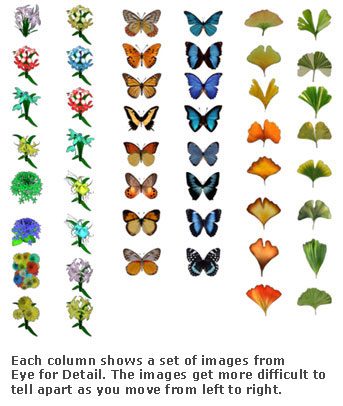![]() Imagine you are in your car driving to a party at a house you’ve never been to before. As you make your way through town you’ll need to continually scan the passing street names and house numbers – all the while keeping track of pedestrians, traffic and the regular hazards we face when driving.
Imagine you are in your car driving to a party at a house you’ve never been to before. As you make your way through town you’ll need to continually scan the passing street names and house numbers – all the while keeping track of pedestrians, traffic and the regular hazards we face when driving.
To accomplish this safely your eyes need to rapidly move around. The name for these quick eye movements is “saccades”. With rapid movement of your eye – saccade – you need to collect all sorts of information including street names, the location of the curb, and even the intentions of a skateboarder approaching the intersection – all in mere milliseconds!

Unfortunately, with age and as a result of certain cognitive conditions, the accuracy and speed of our saccades decreases. As well, our ability to gather information both reliably and quickly decreases significantly, which means it becomes harder to see everything that is required while experiencing a situation like the one outlined above. The result is that you might miss the street you were supposed to turn on or, even worse, find yourself driving dangerously as you focus too much attention on house numbers and street names instead of on the driving conditions. This type of experience might ultimately lead you to feel less confident about going to new places.
The objective of Eye for Detail is to exercise your ability to make saccades more quickly while noticing subtle details with each one. This is achieved by displaying a series of 3 to 5 images briefly in various positions around your screen. Some of these pictures are exact matches while others are only similar. Identifying where the identical images appear is your goal.
As you practice and improve at Eye for Detail you’ll notice the following:
- Images will flash by more rapidly and become more similar in appearance.
- Your brain will be required to move your eyes further distances as the images spread farther apart.
- You’ll graduate to 5 images from the initial 3.
Ultimately, you’ll feel more confident in situations like the one described above by becoming more proficient at processing everything you see through quick saccades. Will you be able to drive safely while finding a new address? Yes, not a problem!






 English
English
 Français
Français


